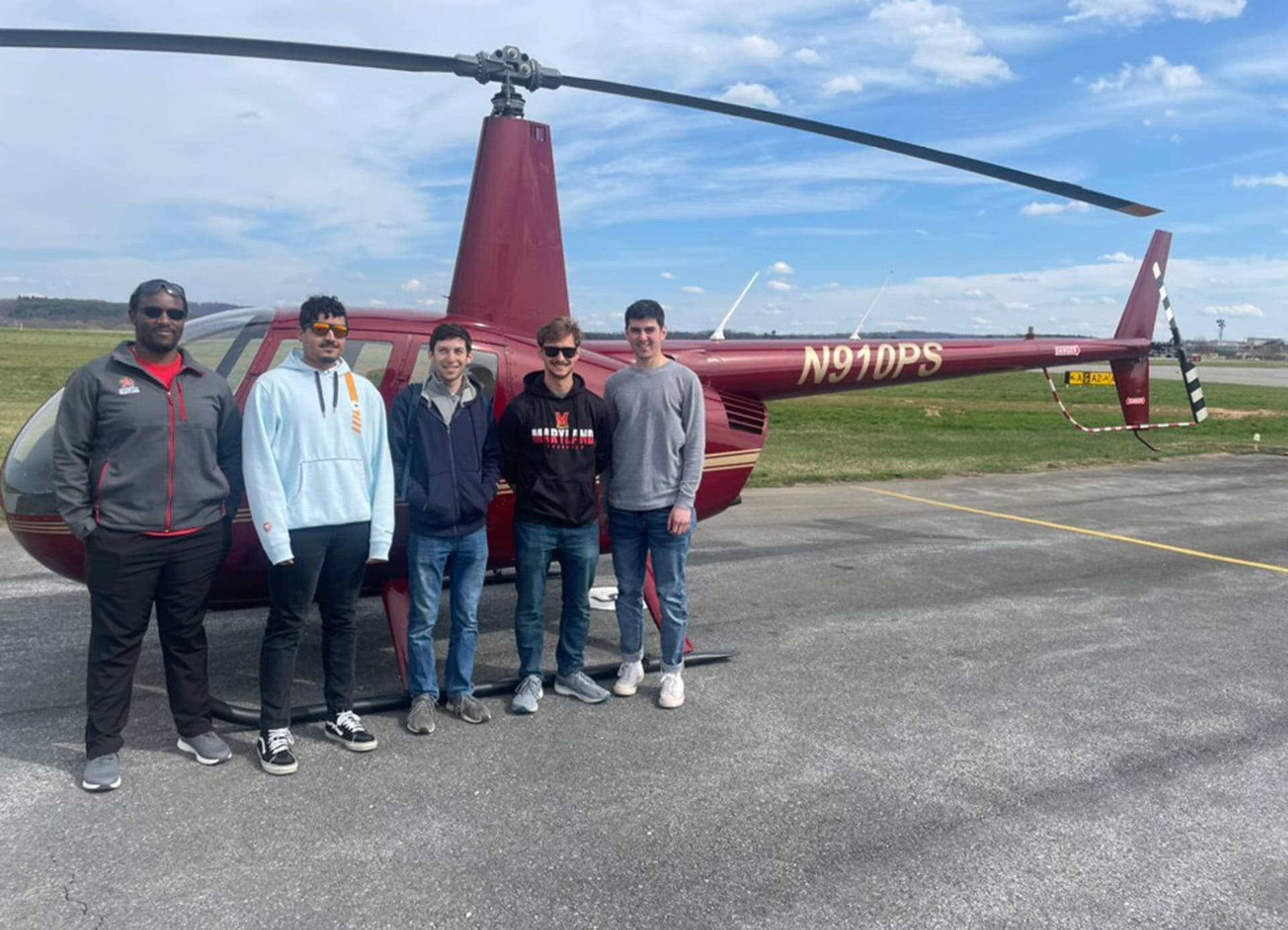University of Maryland Rotorcraft Center Students Secure International Competition Victory—Once Again
After winning 22 of the last 24 outings, it would have been big news if University of Maryland graduate students hadn’t been victorious in the Vertical Flight Society’s annual Student Design Competition.
The team from the Alfred Gessow Rotorcraft Center perhaps squelched the drama from last month’s event by again capturing the top spot in the graduate category with its design for a high-speed vertical takeoff and landing aircraft.
“It was a great learning experience and a team effort in every way,” said team leader Nathan O’Brien, a Clark Doctoral Fellow in aerospace engineering. “Everyone used their diverse skill sets to add unique innovations to the final design, and we couldn’t have done this without support of the department as a whole.”

The team, also including Xavier Delgado, Brendan Egan, Noam Kaplan, Ray Shimry Garatsa and Nicholas Paternostro, submitted designs for a 48,000-pound mixed-power tiltrotor aircraft it named Arion after the mythical horse of the Greek and Roman god Hercules. It is designed to optimize stability and control while delivering dramatic improvements in speed and efficiency compared to current vertical takeoff and landing (VTOL) aircraft.
Equipped with a custom-designed rotor system, a lightweight airframe and advanced avionics, it takes advantage of the AGRC-developed X3D simulation tool, which allows engineers to design ultralight yet robust blades made of composite materials.
The craft’s versatility makes it ideal for battlefield scenarios in which warfighters or cargo must be quickly flown in and out of rugged, mountainous territory, the team said.
The students were mentored by AGRC faculty: Distinguished University Professor and Alfred Gessow Professor Inderjit Chopra (the center’s director), Associate Professor Anubhav Datta and Senior Research Scientist V.T. Nagaraj. The AGRC is based in the UMD aerospace engineering department.
The VFS Student Design Competition challenges students to design a vertical lift aircraft in response to requests for proposals prepared by major manufacturers such as Sikorsky, Bell, Boeing, Leonardo and Airbus, as well as the U.S. Army. These organizations then evaluate the submissions received and select the winners. The 40th annual competition, sponsored by Sikorsky, drew 13 proposals from four countries. The winning teams split $12,500 in prize money.
In addition to the graduate team’s victory, UMD’s undergraduate team took second place with its Karfi VTOL design, a thrust-compounding tiltrotor with many novel technologies and improvements on current concepts.
UMD’s dominance in the competition “challenges other institutions to measure up to our level,” Chopra said. And it ups the ante for successive UMD teams.
“We have to continue raising the bar to stay at the top, given the stiff competition,” he said.

